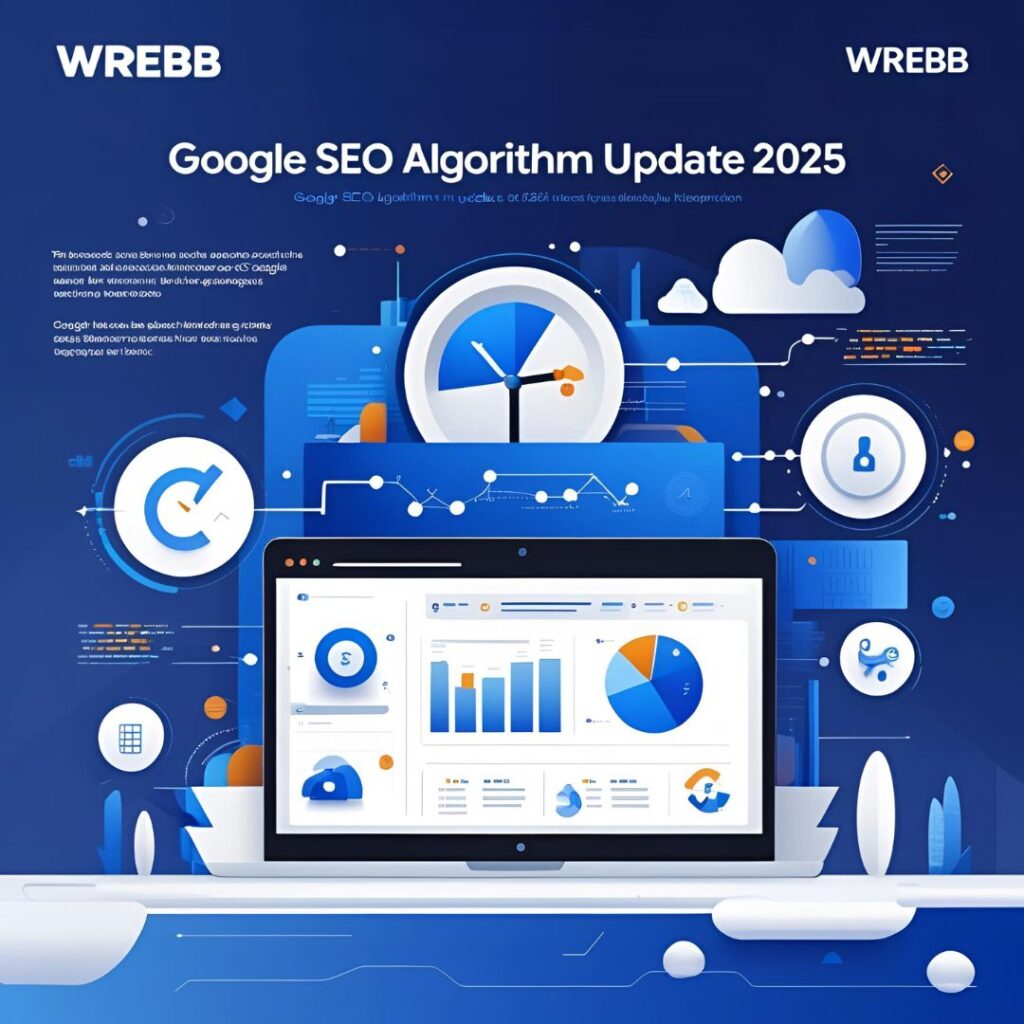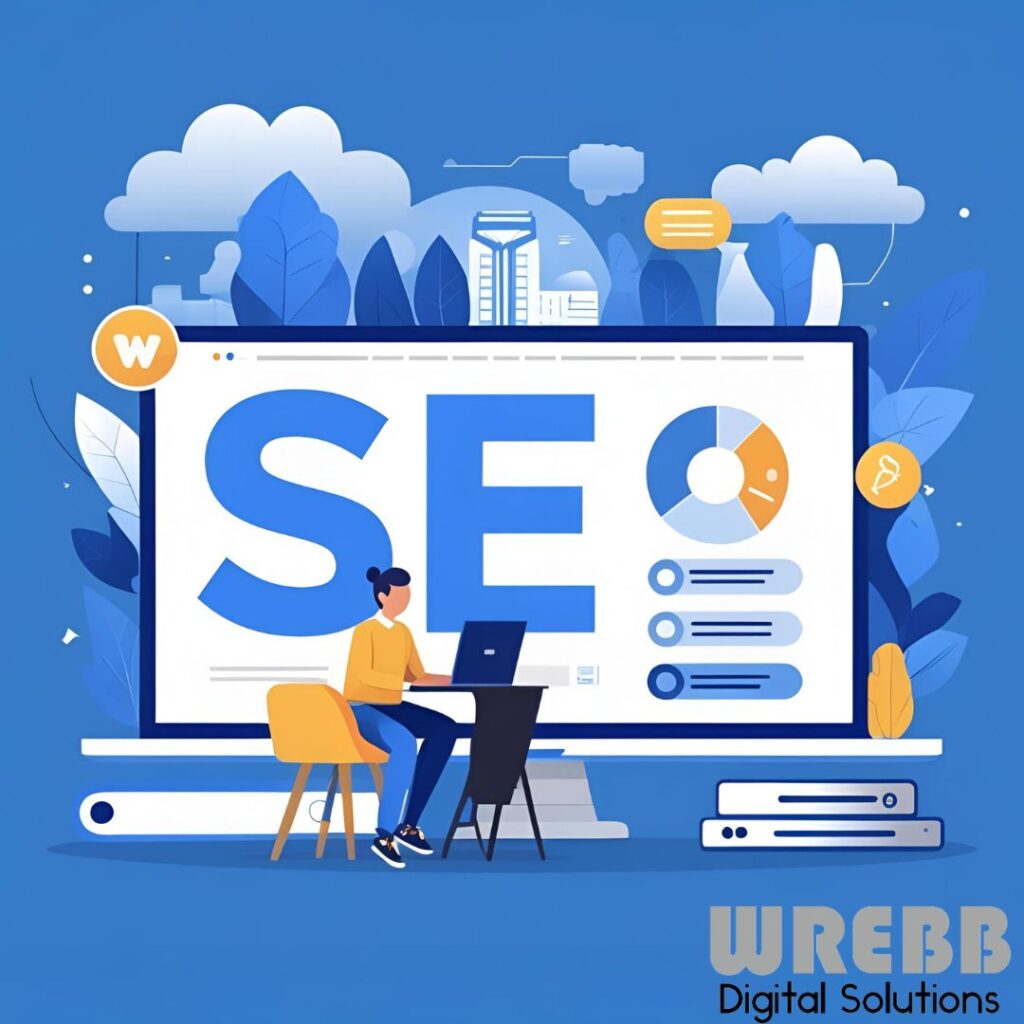Search engine optimization (SEO) remains a critical component for businesses seeking to boost their online visibility. While many aspects of SEO exist, on-page optimization stands as the foundation of any successful strategy. Unlike off-page SEO, that focuses on external signals such as backlinks, on-page SEO involves fine-tuning elements within your website to improve both search engine rankings and user experience.
Table of Contents
ToggleIn this expanded guide, we will explore each component of effective on-page SEO in detail, providing you with actionable steps to improve your website’s performance. Whether you are a beginner or looking to refine your existing strategy, this guide will help you understand and implement essential on-page optimization techniques.
Why On-Page SEO Is Essential for Your Business
Before diving into specific tactics, let us examine why on-page SEO deserves your attention:
Immediate Benefits of Effective On-Page SEO
Higher Search Rankings
Well-optimized pages have a significantly better chance of ranking prominently in search results. When your content clearly communicates its topic to search engines, they are more likely to position it favorably.
Enhanced User Experience
Good on-page SEO is not just about pleasing algorithms—it creates a better experience for your visitors through clear structure, improved readability, and faster loading times. When users find what they are looking for easily, they are more likely to stay on your site.
Increased Organic Traffic
As your rankings improve, you will naturally attract more visitors without paying for each click. This sustainable traffic source can provide long-term value for your business.
Higher Conversion Rates
Properly optimized pages guide users toward desired actions, whether that is making a purchase, signing up for a newsletter, or requesting information. When your content addresses user intent effectively, conversions typically follow.
Now, let us explore each component of on-page SEO in detail.
- Keyword Research & Optimization: The Foundation of Your SEO Strategy
- Finding the Right Keywords for Your Business
Keyword research is not just about finding popular search terms—it is about understanding what your potential customers are searching for and how you can meet their needs.
Effective Keyword Research Process:
Use Specialized Tools: Tools like Semrush, Ahrefs, or Google Keyword Planner provide valuable insights into search volume, competition, and related terms. Begin by entering topics relevant to your business and explore the suggestions.
Analyze Competitor Keywords: Examine what terms your successful competitors are ranking for to identify opportunities you might have missed.
Develop a Balanced Keyword Strategy:
Short-tail keywords (1-2 words): These general terms (like “SEO tips”) have high search volume but also high competition. They are valuable for your main pages.
Mid-tail keywords (3-4 words): These provide a balance between search volume and specificity (e.g., “on-page SEO techniques”).
Long-tail keywords (4+ words): These highly specific phrases (like “best on-page SEO checklist for small businesses”) have lower search volume but often higher conversion potential.
Consider Search Intent: Understanding why people search for certain terms will help you create content that meets their needs:
Informational: Users seeking knowledge (e.g., “how to optimize website for SEO”)
Commercial: Users researching products or services (e.g., “best SEO tools comparison”)
Navigational: Users looking for a specific website (e.g., “Wrebb Digital Solutions SEO services”)
Transactional: Users ready to take action (e.g., “hire SEO consultant”)
-
Optimizing Your Content for Selected Keywords
Once you have identified valuable keywords, you need to incorporate them strategically throughout your content:
Primary Keyword Placement:
Title Tag: Place your primary keyword near the beginning of your title for maximum impact.
Meta Description: Include your keyword naturally in this important snippet.
URL: Create a clean, keyword-inclusive URL structure.
H1 Heading: Your main headline should contain your primary keyword.
First 100 Words: Introduce your keyword early in your content to establish relevance.
Throughout Content: Maintain a natural keyword density (approximately 1-2% of total word count).
Secondary Keywords Integration:
Incorporate related terms and synonyms throughout your content.
Use them in subheadings (H2, H3) where appropriate.
Include them in image alt text when relevant.
Remember: Write for humans first, search engines second. Your content should flow naturally and provide value to readers. Keyword stuffing—the practice of excessively using keywords—can harm both user experience and rankings.
-
Title Tag & Meta Description Optimization: Your First Impression in Search Results
Your title tag is both a ranking factor and your headline in search results—it needs to be both SEO-friendly and click-worthy.
Title Tag Best Practices:
Length: Keep it under 60 characters to prevent truncation in search results.
Keyword Placement: Position your primary keyword near the beginning.
Uniqueness: Each page on your site should have a distinct title.
Compelling Language: Use power words (e.g., “ultimate,” “essential,” “proven”) to increase click-through rates.
Brand Inclusion: Consider including your brand name at the end for recognition.
Examples:
❌ Poor Title: “SEO Tips | My Website”
✅ Effective Title: “10 Proven On-Page SEO Techniques to Boost Rankings in 2025 | Wrebb Digital Solutions”
Writing Effective Meta Descriptions
While meta descriptions are not direct ranking factors, they significantly impact click-through rates from search results.
Meta Description Best Practices:
Length: Aim for 150-160 characters to avoid truncation.
Keyword Inclusion: Naturally incorporate your primary keyword.
Value Proposition: Clearly communicate what readers will gain from your content.
Call-to-Action: Include an action phrase like “Learn how,” “Discover,” or “Find out why.”
Uniqueness: Write original descriptions for each page.
Example:
✅ Effective Meta Description: “Master on-page SEO with our comprehensive checklist. Learn 25 expert techniques to improve your rankings, increase traffic, and convert more visitors. Implement these strategies today!”
-
URL Structure Best Practices: Creating Search-Friendly Web Addresses
Your URL structure affects both user experience and search engine understanding of your content.
URL Optimization Guidelines:
Keep it Short: Shorter URLs are easier to share and remember.
Use Keywords: Include your primary keyword when relevant.
Use Hyphens: Separate words with hyphens (-) instead of underscores (_) or spaces.
Avoid Parameters: Remove unnecessary numbers and parameters when possible.
Use Lowercase Letters: Maintain consistency by using only lowercase letters.
Create a Logical Structure: Organize URLs to reflect your site architecture (e.g., example.com/category/subcategory/page-name).
Examples:
❌ Poor URL: example.com/p=12345&id=67
✅ Effective URL: example.com/on-page-seo-checklist
A clean, descriptive URL helps both users and search engines understand what your page is about before they even visit it.
-
Header Tags Hierarchy: Structuring Your Content Effectively
Header tags (H1, H2, H3, etc.) create a hierarchical structure that helps both search engines and users understand your content organization.
Header Tag Best Practices:
H1 Tag: Use exactly one H1 per page, containing your primary keyword. This is typically your main title.
H2 Tags: Use these for the main sections of your content, incorporating secondary keywords where natural.
H3-H6 Tags: Use these for subsections, maintaining a logical hierarchy.
Keyword Inclusion: Incorporate relevant keywords naturally in your headers.
Consistency: Maintain a logical structure throughout your content.
Example of Effective Header Hierarchy:
H1: The Ultimate On-Page SEO Checklist for 2024
H2: Understanding Keyword Research
H3: Finding High-Value Keywords for Your Niche
H3: Analyzing Keyword Competition
H2: Optimizing Your Title Tags and Meta Descriptions
H3: Title Tag Best Practices
H3: Writing Click-Worthy Meta Descriptions
This structured approach helps search engines understand the relationship between different sections of your content and improves readability for your visitors.
-
Content Quality & Readability: Creating Value for Your Audience
High-quality, readable content is the cornerstone of effective on-page SEO. Search engines increasingly prioritize content that provides genuine value to users.
Creating High-Quality, Original Content
Originality: Provide unique insights rather than repeating what is already available.
Comprehensiveness: Cover topics thoroughly—aim for 1,500+ words for in-depth guides.
Value-Added Information: Include data, examples, case studies, and actionable advice.
Updated Information: Regularly refresh your content to ensure accuracy.
Multimedia Elements: Enhance understanding with relevant images, videos, or infographics.
Expert Perspective: Demonstrate authority through well-researched, knowledgeable content.
- Enhancing Content Readability
Even the most valuable information will go unread if it is presented poorly. Here is how to make your content more digestible:
Readability Best Practices:
Short Paragraphs: Limit paragraphs to 2-3 sentences for easier scanning.
Bullet Points and Lists: Break up dense information into scannable formats.
Subheadings: Use descriptive subheadings to guide readers through your content.
White Space: Use adequate spacing between paragraphs and sections.
Transitional Phrases: Connect ideas smoothly with phrases like “furthermore,” “on the other hand,” or “consequently.”
Varied Sentence Length: Mix short, punchy sentences with longer, more detailed ones for rhythm.
Simple Language: Aim for a Flesch Reading Ease score of 60+ for general audiences.
Bold Important Points: Highlight key information for scanners.
Remember, your content needs to be accessible to your target audience. The easier it is to read and understand, the longer visitors will stay on your page—a positive signal to search engines.
-
Internal & External Linking: Creating a Connected Experience
Strategic linking improves site navigation, distributes page authority, and helps search engines discover and understand your content.
Internal Linking Strategy
Internal links connect pages within your website, creating pathways for both users and search crawlers.
Internal Linking Best Practices:
Relevance: Link to related content that adds value to the readers’ experience.
Descriptive Anchor Text: Use keyword-rich, descriptive text for your links instead of generic phrases like “click here” or “read more.”
Reasonable Quantity: Include 3-5 internal links per 1,000 words of content.
Deep Linking: Link to specific, relevant pages rather than just your homepage or contact page.
Natural Placement: Position links where they make contextual sense.
Link to Important Pages: Help boost your cornerstone content by linking to it regularly.External Linking Strategy
External links (outbound links) connect your content to other websites, demonstrating research quality and topical relevance.
External Linking Best Practices:
Authority Sources: Link to reputable, high-authority websites in your industry.
Relevance: Ensure external links are contextually relevant to your content.
New Tab Opening: Configure external links to open in new tabs (target=”_blank”) to keep visitors on your site.
Moderation: Do not overdo external linking—aim for 2-4 external links per 1,000 words.
Recent Content: When possible, link to recently updated resources.
Citation Value: Use external links to support claims, statistics, or specialized information.
A thoughtful linking strategy enhances user experience by providing additional resources while also strengthening your site is SEO foundation.
-
Image Optimization: Enhancing Visual Content for SEO
Images enhance user engagement but can also impact SEO through proper optimization techniques.
Comprehensive Image Optimization:
Descriptive File Names: Rename generic image files (e.g., IMG_1234.jpg) to descriptive, keyword-inclusive names (e.g., on-page-seo-checklist-infographic.jpg).
Alt Text Implementation: Add descriptive alternative text to all images, including keywords where it is natural. This helps with accessibility and provides search engines with context.
Image Compression: Reduce file sizes without compromising quality using tools like TinyPNG, Squoosh, or ShortPixel.
Responsive Images: Ensure images display properly on all devices using srcset attributes or responsive design principles.
Appropriate Format: Choose the right format for each image:
JPEG for photographs
PNG for images requiring transparency
WebP for modern browsers (with fallback options)
SVG for logos and icons
Proper Dimensions: Resize images to their display size rather than relying on CSS scaling.
Structured Data: Consider using image schema markup for enhanced search features.
EXIF Data Cleaning: Remove unnecessary metadata to reduce file size.
Properly optimized images improve page load speed, enhance user experience, and provide additional ranking opportunities through image search.
-
Mobile-Friendliness & Page Speed: Technical On-Page Factors
In today’s mobile-first indexing environment, how your site performs on mobile devices directly impacts your rankings.
- Mobile Optimization
Mobile-Friendly Best Practices:
Responsive Design: Ensure your site automatically adapts to different screen sizes.
Mobile Testing: Regularly test using Google’s Mobile-Friendly Test tool.
Tap Target Sizing: Make buttons and links large enough (at least 44×44 pixels) to be easily tapped.
Font Readability: Use legible fonts at least 16px in size.
Viewport Configuration: Include proper viewport meta tags.
No Intrusive Interstitials: Avoid pop-ups that obscure content on mobile devices.
Mobile Navigation: Implement an easily accessible menu system for mobile users.
- Page Speed Optimization
Page speed is both a ranking factor and a critical user experience element.
Speed Optimization Techniques:
Core Web Vitals Improvement:
Largest Contentful Paint (LCP): Optimize for main content loading in under 2.5 seconds
First Input Delay (FID): Ensure interactivity in less than 100 milliseconds
Cumulative Layout Shift (CLS): Maintain visual stability (score below 0.1)
Technical Speed Improvements:
Enable browser caching
Minify CSS, JavaScript, and HTML
Implement lazy loading for below-the-fold images
Use a Content Delivery Network (CDN)
Optimize server response time
Reduce redirect chains
Prioritize above-the-fold content loading
Use tools like Google PageSpeed Insights, GTmetrix, or Lighthouse to identify specific speed improvement opportunities for your website.
-
Schema Markup Implementation: Enhancing Search Results with Rich Snippets
Schema markup (structured data) helps search engines understand your content’s context and can result in enhanced search listings known as rich snippets.
Schema Markup Strategy:
Identify Relevant Schemas: Select the appropriate schema types for your content (e.g., Article, Product, FAQ, Recipe, Event, Review).
Implementation Methods: Choose between JSON-LD (recommended by Google), Microdata, or RDFa formats.
Essential Properties: Include all required properties for your chosen schema type.
Testing: Validate your implementation using Google’s Rich Results Test or Schema.org Validator.
Common Schema Types to Consider:
Organization: For your business information
LocalBusiness: For location-based businesses
Article/BlogPosting: For blog content
Product: For e-commerce product pages
FAQ: For frequently asked questions
HowTo: For instructional content
BreadcrumbList: For navigation hierarchy
WebPage: For specific page information
Schema markup does not directly impact rankings but can significantly improve click-through rates by making your search listings more informative and visually appealing.
-
User Experience (UX) & Engagement Signals: The Human Factor in SEO
Search engines increasingly consider how users interact with your site as a quality signal. Positive engagement metrics suggest valuable content.
UX and Engagement Optimization:
Reduce Bounce Rate: Keep visitors engaged with compelling introductions, clear value propositions, and scannable content.
Increase Dwell Time: Encourage longer visits with in-depth content, relevant internal links, and multimedia elements.
Strategic CTAs: Include clear calls-to-action throughout your content to guide user behavior.
Content Skimmability: Use visual hierarchy, bullet points, and formatting to make content easily scannable.
Interactive Elements: Consider adding quizzes, calculators, or interactive infographics to increase engagement.
Social Proof: Include testimonials, reviews, or case studies to build trust.
Readability Improvements: Ensure content is easy to read with appropriate font size, contrast, and line spacing.
Navigation Simplicity: Make it easy for users to find what they are looking for with intuitive menus and search functionality.
By focusing on creating an exceptional user experience, you will not only please search engines but also convert more visitors into customers or subscribers.
Taking Action: Implementing Your On-Page SEO Strategy
On-page SEO is not a one-time task but an ongoing process of refinement and improvement. Here’s how to implement what you have learned:
Your On-Page SEO Implementation Plan:
Audit Current Performance: Analyze your existing pages to identify opportunities for improvement.
Prioritize Updates: Focus first on high-traffic pages or those with the greatest business impact.
Create a Content Calendar: Plan regular content updates and new pieces focused on targeted keywords.
Monitor Results: Track rankings, organic traffic, and engagement metrics to measure success.
Test and Refine: Continuously test different approaches to title tags, content formats, and CTAs.
Stay Updated: Keep abreast of SEO best practices as search algorithms evolve.
Remember that SEO results typically take time—expect to see meaningful improvements within 3-6 months of implementing these strategies consistently.
Need Expert Help with Your SEO Strategy?
Implementing a comprehensive on-page SEO strategy requires time, expertise, and consistent effort. If you are feeling overwhelmed or want to ensure you are maximizing your potential, professional help might be the answer.
Let Wrebb Digital Solutions handle your SEO strategy—our team of experts will optimize your website for maximum rankings and traffic growth. We specialize in creating custom SEO strategies tailored to your specific business goals and target audience.
Benefits of partnering with Wrebb Digital Solutions:
Comprehensive site audits to identify immediate improvement opportunities
Custom keyword research targeted to your specific market
Content optimization that balances SEO requirements with compelling messaging
Technical SEO implementation to ensure your site meets all modern standard
Regular reporting and transparent results tracking
Contact Wrebb Digital Solutions today for a free SEO audit!
Discover untapped opportunities to improve your search visibility and convert more visitors into customers.
Do not let your competitors outrank you—take the next step toward SEO success with experts who understand what it takes to achieve sustainable organic growth.




